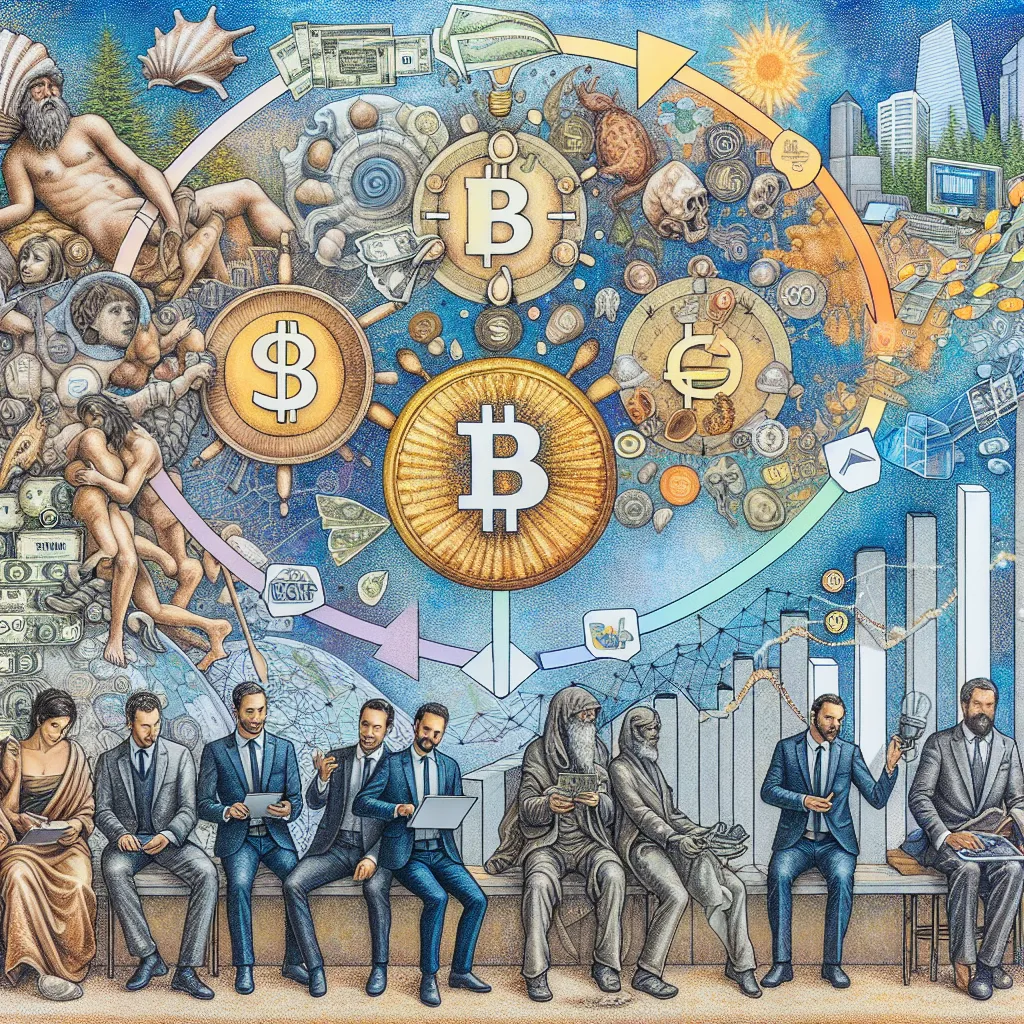I want you to imagine walking the marketplaces of ancient Rome. Lawmakers there once allowed creditors to slice up an indebted person’s belongings—or, famously, even threaten their body. Fast forward a bit, and traders in the bustling Italian city-states who fell on hard times saw their benches of commerce literally broken, a public sign of failed fortune. Bankruptcy in those days wasn’t just a business setback; it left a stamp of personal disgrace, sometimes for life. Yet today, in many countries, financial failure might not ruin you at all. Instead, bankruptcy is a financial “reset” with systems that protect the living, breathing core of economic life: innovation, risk-taking, and renewal.
For centuries, the idea of debt default was tightly woven into a moral code. Why did so many societies equate inability to pay with moral collapse? The answer goes deeper than laws. In many corners of the world, money was bound to honor, reputation, and position in the community. If you failed to repay what you owed, you weren’t just taking a loss—you were betraying the social fabric. Punishment wasn’t just about making creditors whole; it deterred others, keeping up the illusion that debt was a universal, unbreakable covenant.
But not everyone who fails does so through fraud or laziness. This is where the roots of change began to stir, particularly in the trade-oriented city-states of medieval Italy. Leaders there started to draw lines between those who suffered misfortune and those who schemed. Could we ever measure fairness without understanding fate’s role? Early bankruptcy courts asked just that, examining intent, method, and outcome—paving the way for a much more nuanced legal culture.
When I study English history, the real leap happens in the 16th and 18th centuries. The term “statute of bankrupts” may sound dusty, yet it introduced a revolutionary idea: the law could manage collective failure without stripping every last asset from a person. Then came discharge—the legal permission to walk away from old debts after some form of honest reckoning. No longer was debt a life sentence. This was the ethical hinge, separating the modern world’s dynamism from the wreckage of the past.
Yet, even as Western Europe softened its stance, the New World responded to bankruptcy with fits and starts. In America’s early years, Congress had the power to legislate on bankruptcy but wielded it unpredictably, with acts appearing and disappearing according to the tides of economic crisis and political endurance. For a long time, bankruptcy was mostly seen as a rare admission of grave dishonor—a tool for only the most desperate and disgraced.
Things shifted with industrialization and the birth of mass commerce. Economic growth thrives on risk. But what happens if every risk of failure threatens total personal ruin? As I reflect on this, it becomes clear that doggedly punishing failure chokes off creativity and investment. The 1898 Bankruptcy Act, sometimes forgotten outside legal circles, quietly set the foundation for what is now the world’s most advanced system for economic restart. Americans began to see business closure or loss not as the end of the line, but as an opportunity to regroup and reallocate resources.
“Success is not final, failure is not fatal: It is the courage to continue that counts.” — Winston Churchill
That courage, legally protected, is the core of modern bankruptcy. Yet, even into the 20th century, business and personal bankruptcy still brought lasting stigma. What changed? Two developments stand out: the rise of limited liability and the sophistication of bankruptcy courts. By limiting personal risk to what an owner invested in a company, the law encouraged entrepreneurship. If a business failed, the owner lost their stake but not their home. Was this a turning point for American innovation? The evidence is compelling: periods with effective bankruptcy protection coincide with boom times, from postwar manufacturing to the tech revolutions of the late twentieth and early twenty-first centuries.
If you think bankruptcy is about losers and lost causes, consider this: the greatest fortunes in U.S. history often grew from the ashes of financial disaster. P.T. Barnum, Abraham Lincoln’s law partner, and even Walt Disney faced bankruptcy before achieving greatness. Why does society keep betting on people who have failed before? Because in an efficient system, experience—especially hard-won, costly experience—becomes a valuable commodity.
Internationally, the slow global adoption of modern bankruptcy tells its own story. Many developing economies once clung to draconian creditor-first approaches, fearing that forgiving losses would encourage irresponsible risk. Yet World Bank research and waves of economic evidence show the opposite. Investors steer clear of countries where the only fate for failed businesses is dismemberment or disappearance. Reliable, fair bankruptcy proceedings attract capital, fuel competition, and cement trust in the whole economic framework.
New challenges keep testing the boundaries of bankruptcy. The 2008 financial crisis led lawmakers to ask: what do you do when it’s not a factory or a family business failing, but a sprawling, intertwined financial institution? Here, bankruptcy law took on a new role—not just balancing debt and equity, but stabilizing entire economies. Rules were refined to handle complexity, cross-border claims, and catastrophic risk.
To me, one of the most intriguing fronts today involves the digital economy. Cryptocurrency collapses don’t fit old asset categories. What happens when your wealth is a set of digital tokens? Jurisdictions worldwide are revamping legal doctrines to handle these “assets” and the borderless nature of crypto investments. Do you own your coins, or does your exchange? If the rules aren’t clear, chaos quickly follows.
“A pessimist sees the difficulty in every opportunity; an optimist sees the opportunity in every difficulty.” — Winston Churchill
Look inside any well-designed bankruptcy procedure, and you’ll find a complex balance at work. Creditors want their money back, but if they move too quickly, the business collapses and the remaining value vanishes. That’s why systems like Chapter 11 in the United States automatically pause lawsuits and asset seizures. This breathing room allows sound businesses to regroup, plan, and sometimes rise from the brink, stronger and leaner. Ask yourself: would you rather see a once-failing company rebound and rehire, or see its pieces liquidated at fire-sale prices, never to rise again?
Transparency is another key. Modern bankruptcy law compels honest disclosure at every step. The debtor must lay their cards on the table. Is this fair to struggling business owners, or does it add insult to injury? The answer depends on your respect for process—and your trust in the participants.
“Bankruptcy is a legal proceeding in which you put your money in your pants pocket and give your coat to your creditors.” — Joey Adams
Of course, not everything is perfect. Bankruptcies can be abused. Laws are sometimes tightened, as they were in 2005 in America, to prevent frivolous or bad faith filings, especially by individuals. Yet the trend is unmistakable: productive failure is treated as a fact of modern capitalism, not a scarlet letter.
I find it striking that bankruptcy is increasingly seen as a regular part of the business cycle. In technology, failure is a badge of experimentation. VCs sometimes prefer serial entrepreneurs with prior bankruptcies—they know what can go wrong, and they’ve learned from the experience. What does this mean for society? We’re collectively betting that tomorrow’s big idea could emerge from yesterday’s setback.
On the human side, the psychological cost of bankruptcy remains hard to measure. Stigma lingers, especially in cultures with strong traditions of personal honor. But the legal shield against endless debt has demonstrable social benefits. People are more willing to start businesses, take calculated risks, and move out of stagnant jobs. Family homes are protected, and destructive cycles—like intergenerational debt—are lessened.
“In the midst of winter, I found there was, within me, an invincible summer.” — Albert Camus
So, the tale of bankruptcy law is not just about courts, creditors, or cold economic logic. It is, at heart, a story about resilience—the ability to start over and the social wisdom to allow it. As laws continue to adapt to new forms of finance and commerce, I invite you to ask: What would you want from a world in which failure can be both a teacher and a turning point? How much risk and renewal are you willing to allow in your own life—or in your nation’s economic life?
By redefining bankruptcy, we redefine failure. No longer a dead end, but a chance to contribute anew. That, perhaps, is one of the most radical and constructive ideas in legal history.






